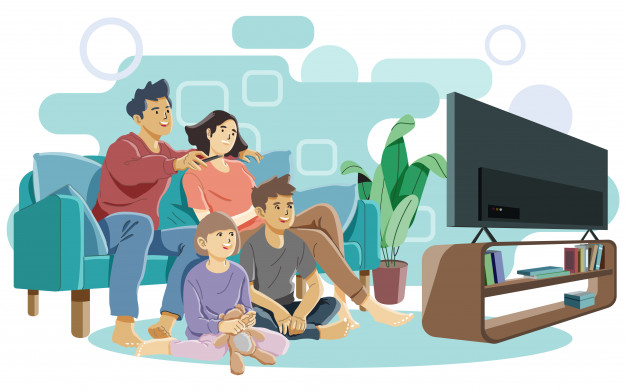
I’ve been talking for a while now about how network TV is likely to become a “farm team” of sorts for the streaming services. Many of the of shows produced for network prime time are likely to become the sorts of shows that fuel the FASTs, and at some point in the near future the networks will need to decide on the wisdom of maintaining a separate prime time line-up.

These have all recently become a hot topic of media conversation, as what were once prognostications are now becoming reality: NBCU is rumored to be thinking of dropping the 10 p.m. hour from its primetime lineup, hit shows like Dancing With The Stars are being moved from linear (ABC) to streaming (Disney Plus), and shows like Abbott Elementary debut on linear (ABC again) but are quickly moved to streaming (Hulu this time) and are finding much bigger audiences in streaming.
And to top it all off, former Disney Chairman Bob Iger told the audience at the Code Conference that linear TV was “marching to a great precipice, and it will be pushed off.”
So there’s all that.
All well and good, but it brings us back to the core notion of whether the networks can actually make money or, more accurately, anywhere close to the same amount of money without their traditional prime time feeds.
It may be a moot point — traditional linear may be too far gone to save in the long term at this point — but it’s worth exploring.
Because if you are talking about the major networks moving their prime time linear broadcast feeds to their FAST services, you still need to figure out exactly how the are going to make money with this new arrangement, given that is comes with less ad time and, in many cases, a less desirable audience.
NEXT TV NEWSLETTER
The smarter way to stay on top of the streaming and OTT industry. Sign up below.
Higher CPMs From More Targeted Advertising?
While the usual response is that advertisers will pay more money to run ads on services that show fewer, better targeted ads, that’s always been a theoretical response rather than a real world one.
Yes, some advertisers will pay a bit more, and yes, the system will attract more brands, especially brands that had never run TV advertising, DTC brands that relied heavily on social video for example. But will there be enough new advertisers and enough of a CPM price bump to make up the difference? That is a key question and one that many people I’ve spoken with feel is unlikely.
Why? Well it’s not just ad revenue that needs to be made up. It’s the money from retrans fees and it’s likely that the hundreds of millions of dollars that will be lost once those fees evaporate will never come back. MVPDs were willing to pay the networks those princely retrans sums back in the day, when they needed the networks presence to ensure that viewers would sign up for cable service.
But in today’s streaming ecosystem, it’s more likely the MVPDs and OEMs who have the upper hand here.
The Benefits of the 25-Episode Season
There’s also the impact that streaming, with its 10-to-12-episode seasons, has on the creative community and on the syndication market in general.
Let’s start with the creative community.
A job on a 25-episode network series gave actors, writers, producers and crew members something close to a full-time job and having summers and holidays off worked nicely around school schedules. In the new streaming-centric world, creatives report feeling like they are always juggling jobs, and there’s a whole lot less certainty around schedules and where the next paycheck is coming from, even if that paycheck is likely to be an ample one.
That, in turn, makes those careers less desirable for a new generation, which then ultimately had an impact on the quality of the work.
Then There’s Syndication
Ten seasons of Friends include 236 episodes, which is why that show is so popular in syndication: you can watch a new episode every night for months without seeing the same episode twice. That also helps it seem new to the next generation over viewers and those 236 episodes fill large blocks of time on a linear programmer’s schedule.
Streaming series, with four seasons of just 10 episodes each, become one-time binge watches, not long term comfort food. And a system built on linear channels needs those long running series in order to provide comfort food.
So the question is whether the networks will be incentivized to return to the 22 or 25 episode season for their prime-time-on-streaming lineups, or are the economics just too unfavorable in the current climate.
What Happens to All Those Affiliates?
Finally, there’s the question no one predicting the death of network prime time seems to want to answer: what happens to all those affiliates and O&Os without prime time?
Do they stick around and try to make things work using NextGen TV (ATSC 3.0) technology to create an alternative to streaming television? And if so, what type of audience will they serve, e.g. who out there is looking for an alternative to streaming?
(There is arguably a rural audience that is underserved by streaming, but the new infrastructure bill promises to do away with these sorts of broadband dead zones.)
Or do the affiliates find a home on streaming as purveyors of local oriented news and other content (and is there even a market for that?)
It’s perhaps the biggest question that will need to be answered if and when TV rolls out its own version of the farm team system and cuts back on broadcast.
And the industry still seems to be struggling to come up with an answer.
Stay tuned.
Alan Wolk is the co-founder and lead analyst for media consultancy TV[R]EV
